Collaboration between Elon Musk’s companies has led to synergies but also caused some issues
It is no secret that Elon Musk’s companies often collaborate, share workers or even transfer technologies. But you may not know how common these situations are and what synergies arise from them. We’ve put together a summary of actual examples of cooperation between various Musk’s companies. They mainly involve Tesla and SpaceX because they collaborate the most, but we’ll also look at OpenAI or the Boring Company. Sometimes the connections between Musk’s projects are minor but in some cases, the companies became intertwined so significantly that it led to concerns.
Tesla and SpaceX
Elon Musk said in the past that “cross-fertilization of knowledge from the rocket and space industry to auto back and forth been really quite valuable”. Friction stir welding is a great example. It is a production method, which SpaceX did not invent, but they improved it for the purposes of Falcon 9 aluminum tank production. Musk then transferred this knowledge to Tesla where it is used in the production of aluminum frames for Model S and X. Musk described the manufacturing process in a 2012 interview:
Instead of riveting the ribs and hoops, you use a special machine that softens the metal on both sides of the joint without penetrating it or melting it. Unlike traditional welding, which melts and potentially compromises some metals, this process works well with high-strength aluminum alloys. You wind up with a stiffer, lighter structure than was possible before. And your material loss is maybe 10 percent, just for trimming the edges. Instead of a ratio of purchased to flown material—what they call the “buy to fly” ratio—of maybe 10 to 20, you have a ratio of 1.1, 1.2 tops.
Material engineering teams in Tesla and SpaceX often work together and sometimes even have joint meetings. Vice President for Materials Engineering in both SpaceX and Tesla is Dr. Charles Kuehmann who previously worked as an alloy expert at Apple.
Engineers at both companies also sometimes help each other to solve problems. In 2017, Tesla had problems with the quality of a cast aluminum part that was taking hours to diagnose and fix. Tesla engineers asked their colleagues from SpaceX for help, who advised them to use ultrasound sensors to isolate the problem. This solution saved 8 hours of work per car.
When Chris Lattner, who led the Autopilot software team for 6 months, left Tesla in 2017, he was temporarily replaced by a SpaceX executive who led the teams in both companies while Tesla searched for Lattner’s replacement.
Tesla’s logos were also visible on a special cap that SpaceX uses to lift recovered rocket boosters and to retract booster legs after landing. It’s possible that the car manufacturer supplied some components for this device, like electric motors or solar cells.
In the early days, Tesla worked on the design of the Model S in an unused corner of the SpaceX factory. Today, Tesla has its own design studio in Hawthorne.
Both SpaceX and Tesla logos were designed by RO Studio, a New Jersey design company.
SpaceX President Gwynne Shotwell also revealed that Dragons and Falcons are using Tesla batteries.
Tesla also uses enterprise resource planning software called Warp Drive, which was originally developed by SpaceX. But now both companies use it and develop it together. It is also common for Tesla employees to watch SpaceX launches at work and cheer them on.
Both companies also share the company jet. In 2016, Tesla paid SpaceX approximately $1.1 million for use of the corporate jet.
Tesla electric vehicles are also fairly common among SpaceX employees. Teslas are even sometimes used for official purposes. For example, SpaceX security at Cape Canaveral uses a Model S. It’s also been revealed that Model X will be used to transport NASA astronauts to SpaceX pad 39A for Crew Dragon launches to the International Space Station.
Elon Musk occasionally took advantage of situations when some of his companies were doing better than others. For instance, in the early days, he borrowed $20 million from SpaceX to finance Tesla. SpaceX also purchased some of SolarCity’s bonds. The company was founded by Elon’s cousins and was later acquired by Tesla.
And lastly, the technologies developed by Tesla for its electric vehicles and solar products could find applications on Mars in the future. SpaceX has been vocal since its inception about wanting to lower the cost of spaceflight and eventually enable the colonisation of Mars.
Hyperloop and the Boring Company
In 2013, Elon Musk introduced the Hyperloop Alpha concept, a transportation system that would allow extremely fast transport of people and cargo in evacuated tubes. However, Musk did not pursue the development of hyperloop himself and instead open-sourced the idea. But this does not mean that he abandoned the concept entirely. SpaceX has built a sub-scale hyperloop test track next to its Hawthorne factory and has held an annual competition for hyperloop pods designed by student teams from around the world.
In the early years of the contest, the student pods did not need to provide their own propulsion. They were pushed by a Tesla-designed pod that likely used electric motors from their EVs.
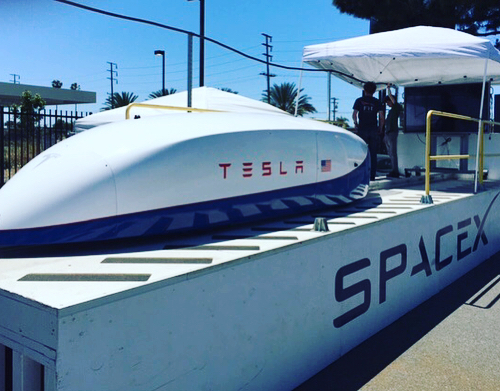
Tesla pod that was used during hyperloop competitions (Credit: Elon Musk)
In addition, Musk mentioned that hyperloop might be useful for transporting passengers to launch pads used for the Starship-based Earth-to-Earth transportation system. Because of noise and safety requirements, the rockets would have to launch several hundred kilometers offshore. So Elon Musk suggested that passengers could take a hyperloop from the city center to the ocean launch pad. The tunnel would lead under ground and sea. According to Gwynne Shotwell of SpaceX, these kinds of tunnels could also find use on Mars. So it’s probably not surprising that Elon Musk also has a tunnel-digging venture.
The Boring Company’s mission is to lower the costs and improve the technology of boring tunnels and it intends to use the tunnels for new transportation systems and other purposes. The Boring Company does not seem to be actively developing hyperloop technology to be used in the tunnels, but that’s understandable. Hyperloop is better suited for long distance routes, but the company is still in its infancy, and so far it’s been focusing on shorter tunnels that could be used for a simpler transportation system called the Loop.
The Loop uses autonomous electric vehicles driving in narrow tunnels. In 2018, the company has demonstrated how Loop could work with existing Tesla electric cars but special vehicles designed to carry more people will also be developed eventually. These vehicles are expected to use Tesla technology, as evidenced by an agreement between the Boring Company and Musk’s automaker to sell batteries and electric motors worth $400,000 to the Boring Company in 2017 and 2018.
The Boring Company also uses Teslas as company vehicles, and Model X has proven helpful for the transportation of muck during the construction of a demo tunnel in Hawthorne.
No real surface is perfect, but it did pull about 250,000 lbs of muck rail cars out of a tunnel pic.twitter.com/wlKbLwd0f7
— Elon Musk (@elonmusk) March 22, 2018
The downside
Such close cooperation between otherwise independent companies can sometimes lead to issues. For example, the Boring Company was first set up as a division of SpaceX and in the beginning, there wasn’t a very clear line between the two companies. Elon Musk reportedly used SpaceX staff and resources for the Boring Company. This sharing of resources between the two projects concerned some of the SpaceX investors who did not like the fact that the Boring Company used resources of a company in which they invested, without the company’s Board of Directors approving it. When the Boring Company became independent after an investment of $100 million that came mostly from Elon Musk, SpaceX received a 6% stake in the Boring Company as compensation for the borrowed resources in the early stages of the project. However, Elon Musk called the Wall Street Journal report about this issue “incredibly misleading“, so it’s unclear how much of the report is true.
Then there is OpenAI, which Elon Musk co-founded in 2015 to develop advanced artificial intelligence in a responsible and safe way. The issue was that Tesla is also involved in the field of artificial intelligence through its development of Autopilot for its vehicles. This could eventually lead to a conflict for Elon Musk and was noted as one of the reasons why he left OpenAI in February 2018. Another reason for Musk’s departure was that Tesla competed with OpenAI for potential hires. There were also some cases of AI experts moving from one company to the other. For example, after Chris Lattner left Tesla, as mentioned above, the automaker hired Andrej Karpathy from OpenAI to lead the automaker’s Autopilot program. However, it’s unclear how much of an issue this competition for talent really was. Especially since Musk later explained that it wasn’t the only reason why he left OpenAI.
This article was originally published in Czech by Petr Melechin and was later translated into English by Vlastimil Švancara.










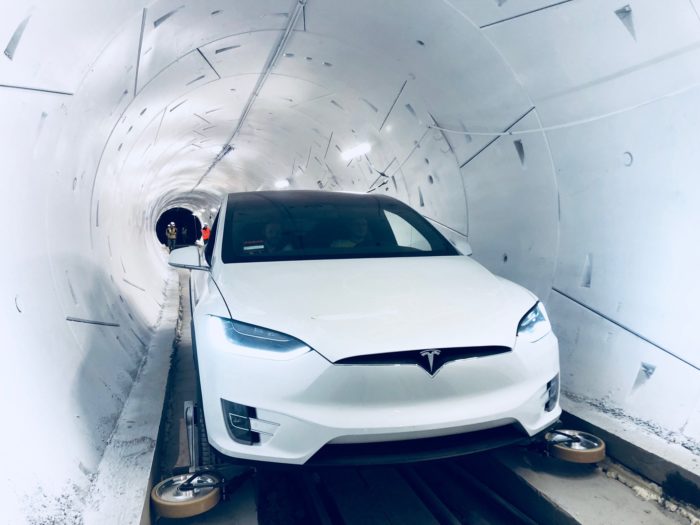
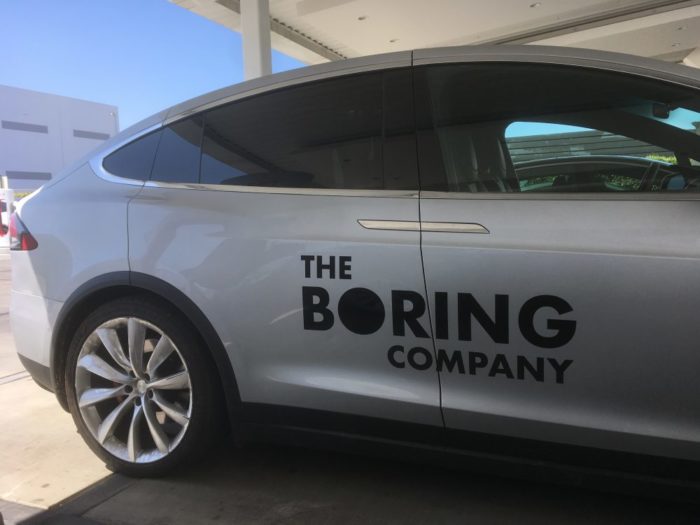
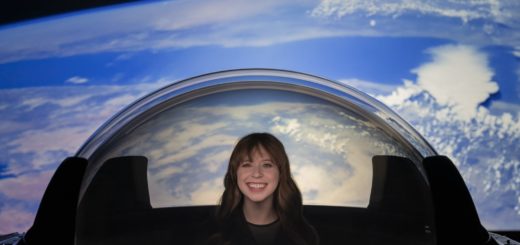
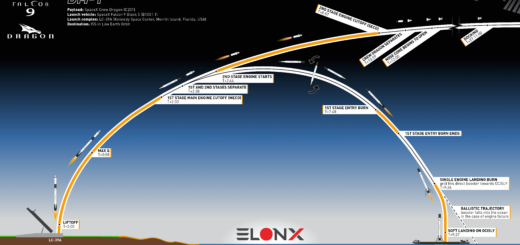
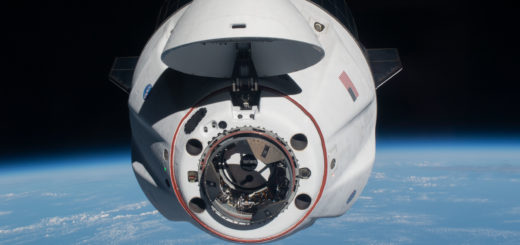
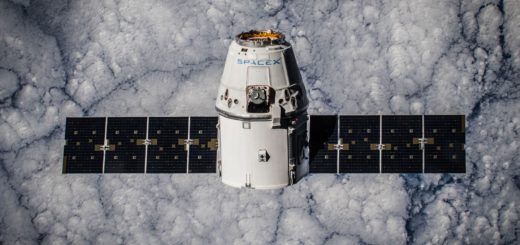

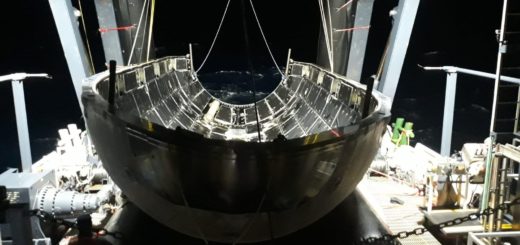
Just one factual error: In the early days, Tesla worked on the design of the Model S not Roadster in an unused corner of the SpaceX factory in Hawthorne
You’re right. Thanks, will fix.